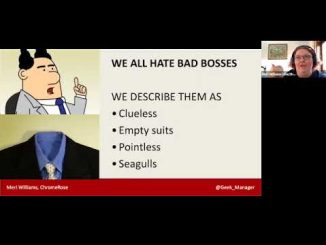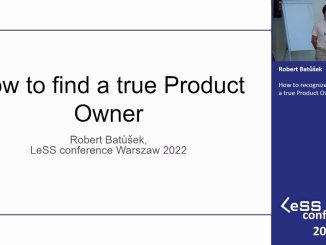Videos on Scrum and Agile Project Management
Having scaled a number of Agile teams at different speeds, this presentation will walk you through some of the inflection points you will experience, how to navigate them, and reflect on all the things the presenter wishes she had known just a little bit earlier.
This workshop explores the growing pains in Continuous Delivery and describe some strategies to cope with them. How do we address these growing pains? What are the next steps, beyond the CD beginner’s basic automation? How do we optimize our pipelines to meet our needs as these needs grow?
Technical debt is inevitable in Agile software development and rewriting your code every 6 months is not an option. Refactoring is a complex topic that doesn’t have a one-size-fits-all solution. Frontend applications are particularly sensitive because of frequent requirements and user flows changes.
There are many examples of fake Product Owners (PO) in the companies (PO as Business Analyst, PO as Project Manager, Proxy PO). Companies cause this by using many organisational design antipatterns (assign one PO per team, “Product” being in fact a component, using committee for product decisions instead of one person).
Based on a true story of the lessons learned coaching two Scrum teams on one product. Why is it that the same coaching techniques, in the same environment, can lead to drastically different outcomes? Learn how to identify the culture cycle and break bad habits to unlock the power of Agile team self-management.
This presentation discusses what technical debt looks like, and how easy it is to get into debt in the first place. Then the presenter proposes to put a plan into action to get out of it, understanding that you should consider technical debt as a business problem, not as a tech problem.
This video is an interactive exploration of retrospectives top tips, strategies and agile hacks for enabling continuous improvement of Scrum teams.








